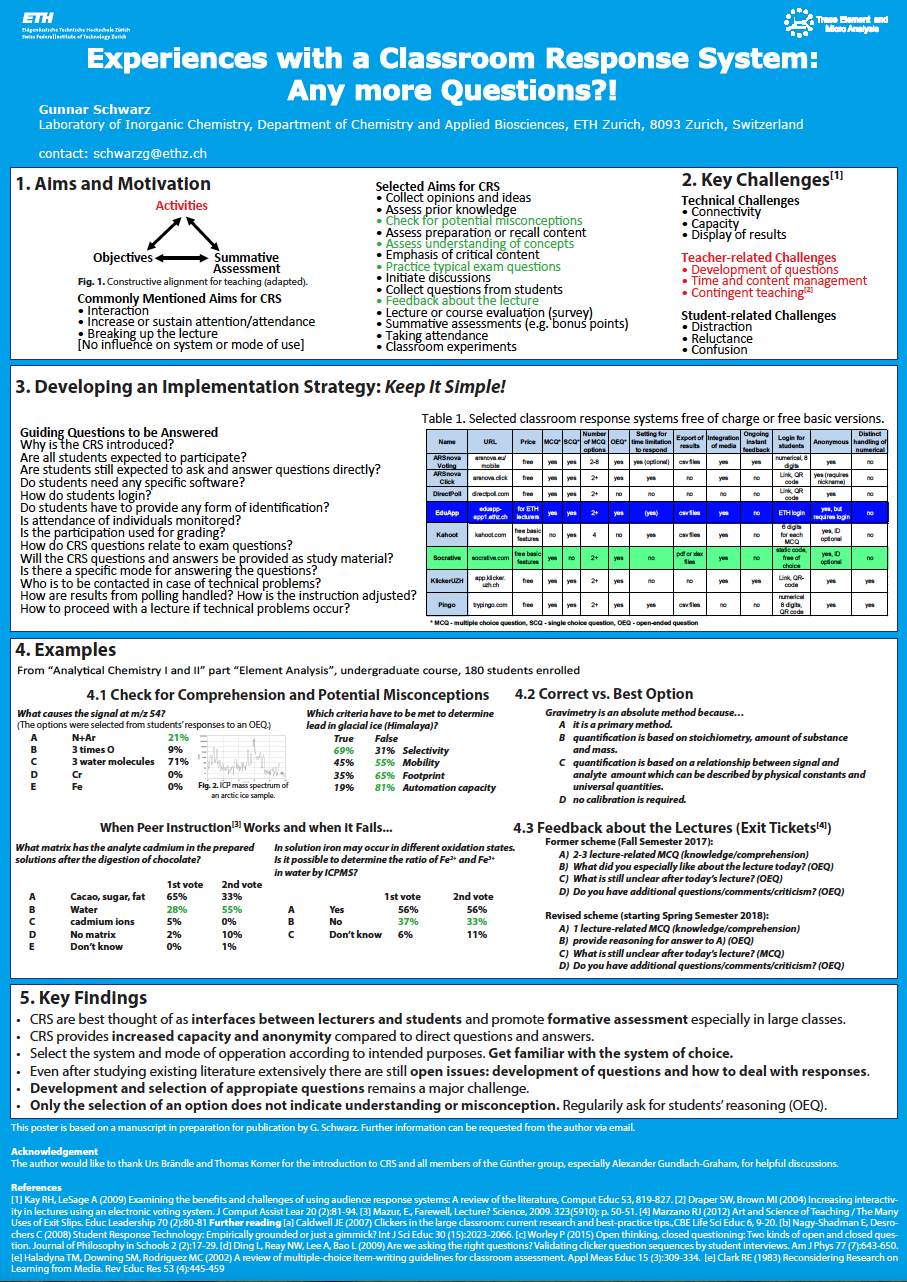Experiences with a classroom response system: Any more questions?!
Abstract
Lecturers who want to encourage their class to actively participate during lectures can be disheartened. Particularly in larger classes, it is common for only a few students to answer questions and fewer take part in discussions around complex problems, which makes interactive pedagogy challenging. Lately, electronic devices, mostly hand-held remote controls (clickers) and more recently software-based classroom response sys-tems (CRS) controlled via mobile phones, tablets, or notebooks, were employed and prompted a range of new introduction styles.
In this contribution, I present a framework for CRS implementation, how I integrat-ed CRS in my undergraduate course in quantitative element analysis and address a number of encountered challenges. This is accompanied with an up to-date overview of software-based clicker systems, their features and comparison to the ETH Zürich EduApp. I discuss several examples with occasionally unexpected results for questions addressing potential misconceptions. An original and refined approach to collect addi-tional feedback, exit tickets, demonstrates additional uses.
Although CRS are fairly easy to manage on a technical level, my experience reveals several and in the literature often not sufficiently addressed challenges. This includes formulating questions and handling results, which turned out to be quite complicated. For example, the transition from the commonly open-ended questions directly asked to the multiple-choice format routinely employed for CRS requires the concrete formula-tion of distractors (incorrect answers), which should also reflect held misconceptions of students.
Nonetheless, if CRS are appropriately applied they can enrich the lecture component of a course substantially with opportunities for formative assessments. CRS work like interfaces between lecturers and students, capable of handling much more response than direct verbal interaction and a greater variety of information can be transmitted than the show of hands. This may inform both lecturers and students about deficits. Defining specific aims, answering guiding questions and, accordingly, selecting an appropriate system are helpful steps to develop an implementation strategy.

